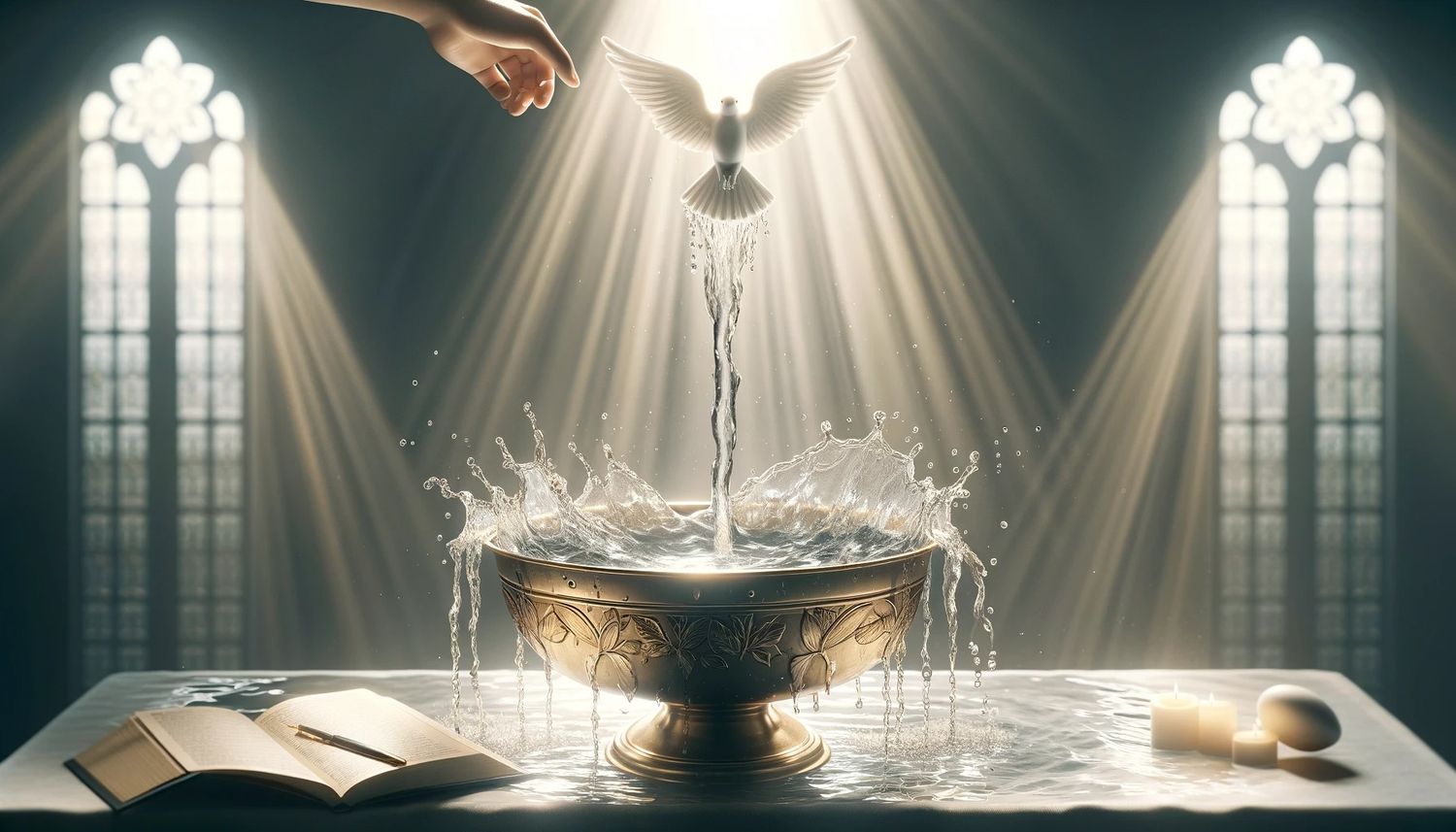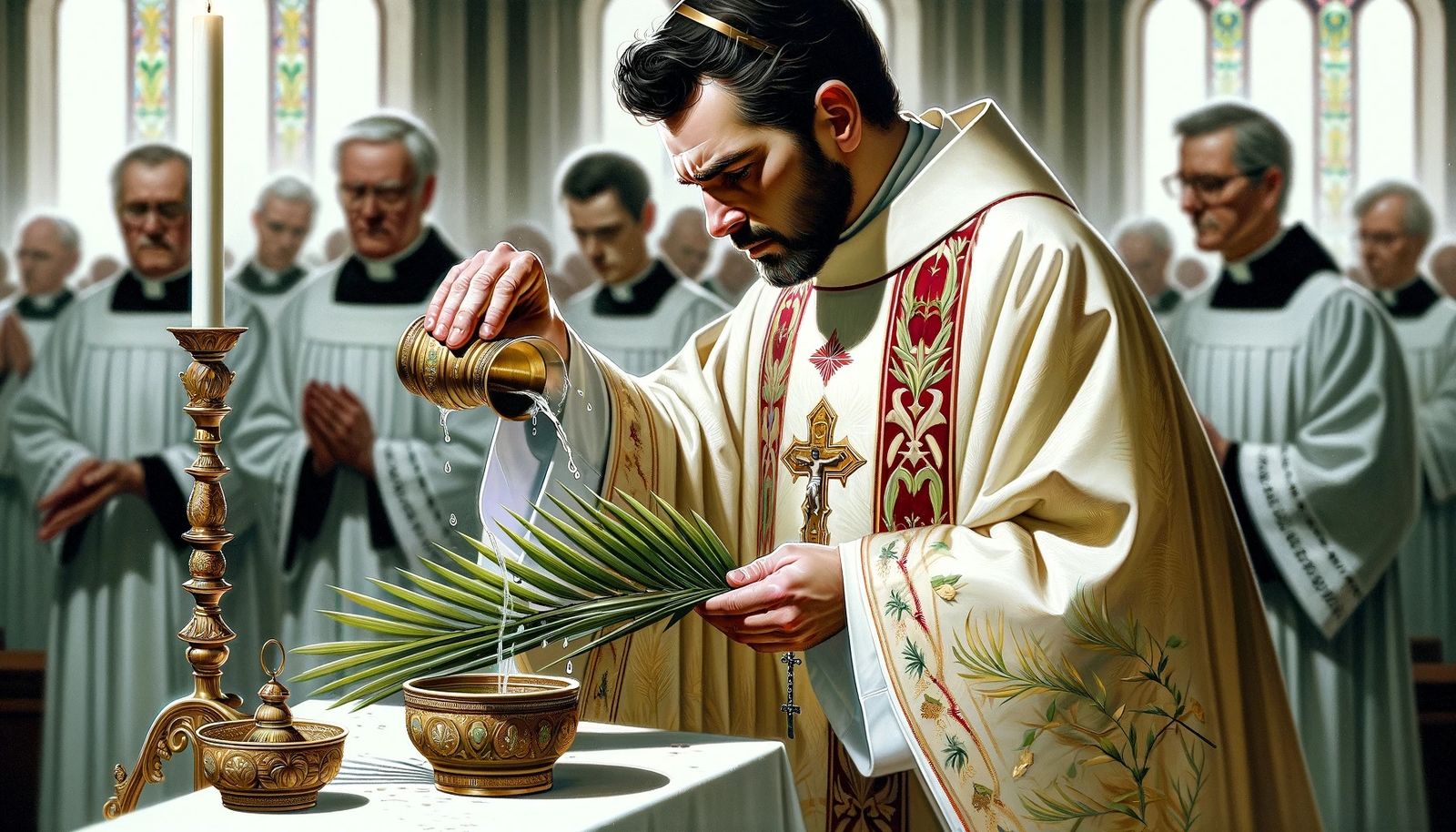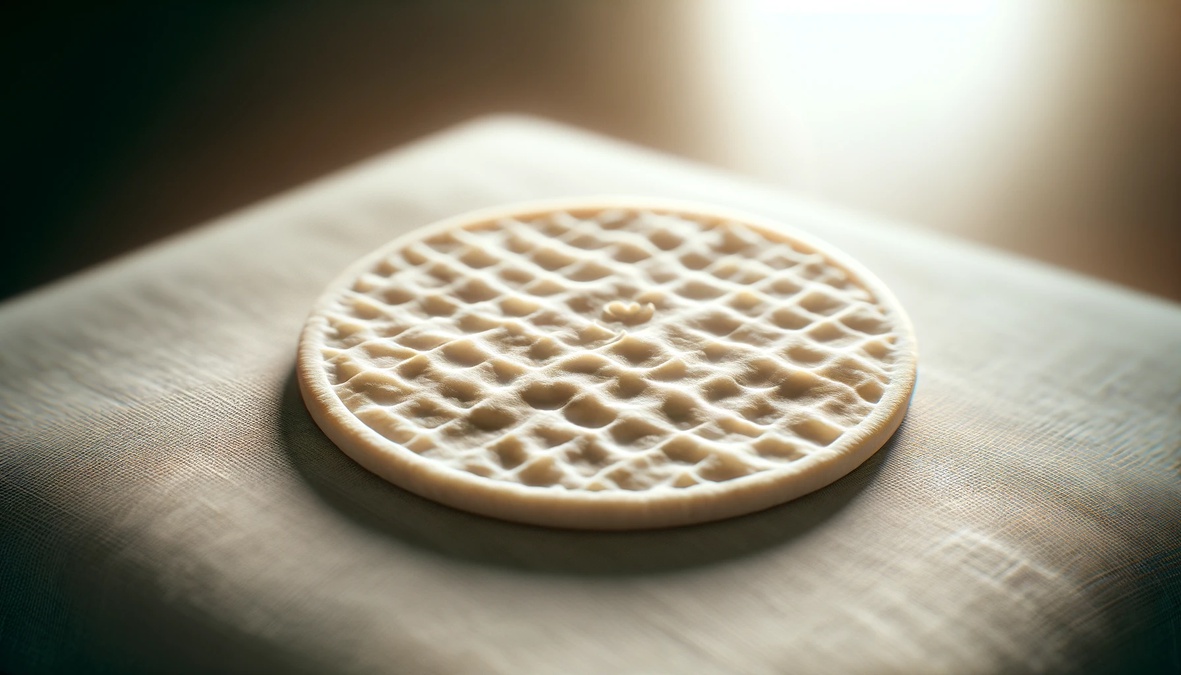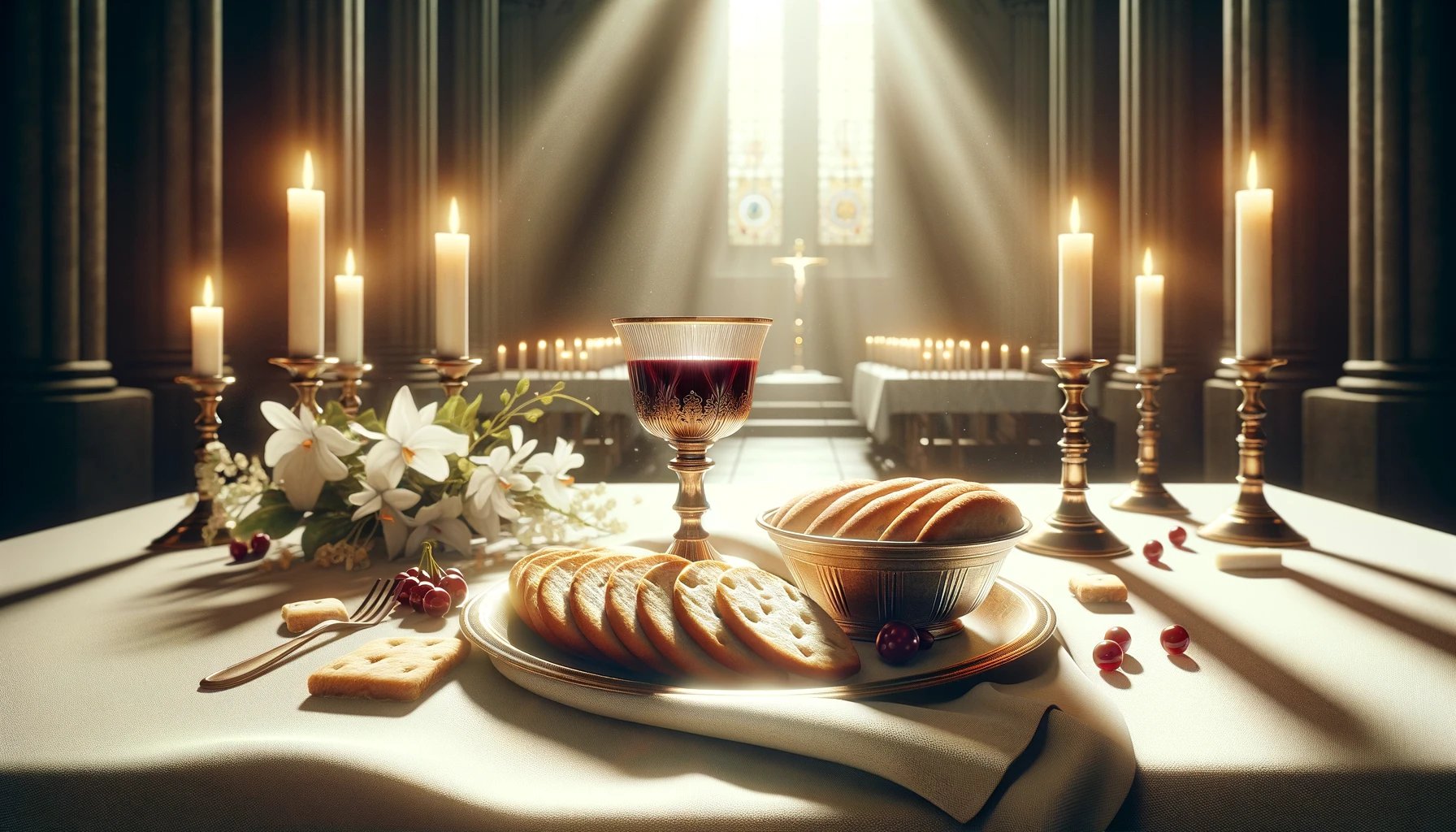Home>Theology and Spirituality>What Does The Virgin Mary Represent In Catholicism
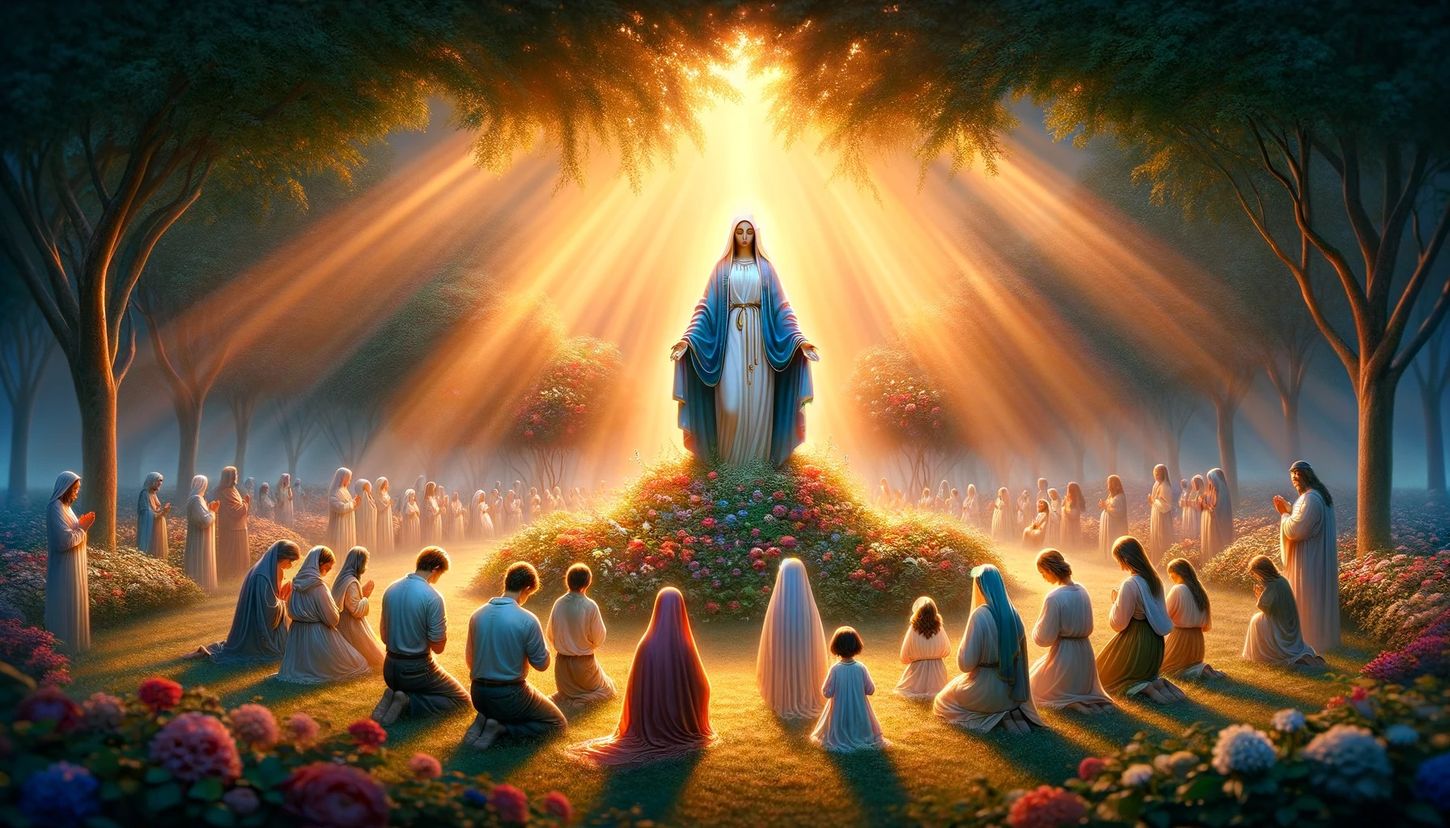

Theology and Spirituality
What Does The Virgin Mary Represent In Catholicism
Published: February 15, 2024
Jason DeRose, Managing Editor at Christian.net, uses his expertise in religion and journalism to deepen understanding of faith's societal impacts. His editorial leadership, coupled with a strong academic background, enriches the platform’s diverse content, earning him recognition in both journalism and religious circles.
Explore the significance of the Virgin Mary in Catholic theology and spirituality. Uncover the profound role she plays in the faith and devotion of believers.
(Many of the links in this article redirect to a specific reviewed product. Your purchase of these products through affiliate links helps to generate commission for Christian.net, at no extra cost. Learn more)
Table of Contents
Introduction
The Virgin Mary holds a revered and central position in Catholicism, embodying profound spiritual significance and serving as a source of inspiration and devotion for millions of believers worldwide. As we delve into the multifaceted role of the Virgin Mary in Catholic theology, worship, and culture, we will uncover the depth of her influence and the enduring impact she has had on the faithful throughout history.
Mary, the mother of Jesus, occupies a unique place in Christian tradition, revered not only for her pivotal role in the birth and upbringing of Jesus but also for her unwavering faith and devotion to God. Her significance extends far beyond her earthly existence, as she is venerated as the Mother of God, a title that underscores her divine connection and spiritual eminence within Catholic doctrine.
The profound reverence for the Virgin Mary is evident in the rich tapestry of Catholic theology, where she is celebrated as the Theotokos, the God-bearer, affirming her pivotal role in the incarnation of Christ. This theological foundation underscores the profound impact of Mary's life and her enduring legacy, which continues to shape the beliefs and practices of the Catholic faithful.
As we embark on this exploration of the Virgin Mary's significance in Catholicism, we will unravel the multifaceted dimensions of her influence, from her portrayal in sacred scripture and doctrine to her enduring presence in the hearts and minds of believers. Through this journey, we will gain a deeper understanding of the profound spiritual and cultural significance of the Virgin Mary within the Catholic tradition, illuminating the enduring impact of her legacy on the faithful and the broader tapestry of human spirituality.
Read more: Catholicism: Mary – Why Virgin After Birth
The Virgin Mary in Catholic Doctrine
The Virgin Mary occupies a central and revered position in Catholic doctrine, embodying profound theological significance and serving as a cornerstone of faith for millions of believers. At the heart of Catholic teaching lies the doctrine of the Immaculate Conception, which asserts that Mary was conceived without original sin. This foundational belief underscores Mary's unique purity and sanctity, positioning her as a fitting vessel for the incarnation of Christ.
Furthermore, Catholic doctrine venerates Mary as the Theotokos, the Mother of God. This title encapsulates the profound mystery of the Incarnation, affirming Mary's pivotal role in bringing forth the divine into human form. The recognition of Mary as the Mother of God underscores her unparalleled significance within the Christian narrative, emphasizing her intimate connection to the salvific mission of Jesus Christ.
In addition to her role as the Mother of God, Mary is revered as the New Eve, symbolizing the reversal of the original sin through her obedient and faithful response to the divine plan. This theological parallel underscores Mary's pivotal role in the redemption of humanity, aligning her with the salvific work of her son, Jesus Christ.
Moreover, Catholic doctrine emphasizes Mary's perpetual virginity, affirming her status as a virgin before, during, and after the birth of Jesus. This belief underscores Mary's exceptional purity and her unwavering commitment to her divine calling, further solidifying her exalted position within the theological framework of Catholicism.
The doctrine of the Assumption of Mary further underscores her unique status within Catholic theology. According to this teaching, Mary was assumed body and soul into heaven at the end of her earthly life, affirming her exalted position as the Queen of Heaven and underscoring her role as a powerful intercessor for the faithful.
In essence, the Virgin Mary's profound significance in Catholic doctrine extends far beyond her role as the mother of Jesus. She embodies the embodiment of divine grace, purity, and unwavering faith, serving as a model of holiness and devotion for believers. Her exalted status within Catholic theology reflects the enduring impact of her life and her pivotal role in the redemptive narrative of Christianity, underscoring the depth of her influence and the profound reverence she commands within the hearts and minds of the faithful.
The Role of the Virgin Mary in Catholic Worship
The veneration of the Virgin Mary holds a central place in Catholic worship, permeating the liturgical life of the Church and serving as a source of profound spiritual devotion for believers. Mary's role as the Mother of God and her unwavering faith have positioned her as a revered intercessor and a symbol of compassion and maternal care within Catholic worship.
One of the most prominent forms of Marian devotion in Catholic worship is the recitation of the Rosary. This cherished prayer practice, which incorporates meditations on the life of Jesus and Mary, underscores the significance of Mary's intercessory role in the lives of believers. Through the Rosary, Catholics honor Mary's virtues and seek her guidance and protection, fostering a deep sense of spiritual connection and intimacy with the Mother of God.
The celebration of Marian feast days also constitutes a vital aspect of Catholic worship. Events such as the Feast of the Immaculate Conception, the Feast of the Assumption, and the Feast of Our Lady of Guadalupe provide opportunities for the faithful to express their devotion to Mary and commemorate her pivotal role in the Christian narrative. These occasions serve as a testament to the enduring impact of Mary's life and her profound influence on the spiritual lives of believers.
Furthermore, Marian devotions, such as the Angelus and the Regina Caeli, punctuate the rhythm of daily prayer within the Catholic tradition, underscoring Mary's presence as a guiding and comforting figure in the lives of believers. These devotional practices serve as a means of seeking Mary's intercession and invoking her maternal protection, fostering a deep sense of spiritual communion and trust in her compassionate care.
The veneration of Mary through hymns, artwork, and processions further enriches the tapestry of Catholic worship, infusing sacred spaces with the beauty and grace associated with the Mother of God. Marian hymns, such as "Hail, Holy Queen" and "Ave Maria," resonate with the faithful, evoking a sense of reverence and adoration for Mary's exalted role in the Christian narrative. Likewise, the visual representation of Mary in sacred art and iconography serves as a powerful means of connecting with her maternal presence and seeking solace in her compassionate embrace.
In essence, the role of the Virgin Mary in Catholic worship is characterized by profound reverence, devotion, and a deep sense of spiritual intimacy. Through a rich tapestry of devotional practices, feasts, and artistic expressions, Catholics honor Mary as the Mother of God and seek her intercession, finding solace and inspiration in her unwavering love and maternal care. Mary's enduring presence in Catholic worship serves as a testament to her profound influence on the spiritual lives of believers and her exalted status as the Queen of Heaven and Earth.
The Virgin Mary as a Symbol of Purity and Motherhood
The Virgin Mary stands as a profound symbol of purity and motherhood within the Catholic tradition, embodying virtues of immaculate purity and unwavering maternal love. Central to Mary's significance is her portrayal as the epitome of purity, exemplifying a life of unblemished devotion and moral integrity. The doctrine of the Immaculate Conception, which asserts Mary's conception without original sin, underscores her exceptional purity and sanctity, positioning her as a vessel of divine grace and holiness.
Mary's purity is further accentuated by her unwavering commitment to God's will and her steadfast faith in the face of profound challenges. Her resolute acceptance of the angel Gabriel's message, culminating in the miraculous conception of Jesus, exemplifies her unwavering obedience and profound trust in God's providence. This unwavering faith and moral purity solidify Mary's status as a paragon of virtue and a source of inspiration for believers striving for spiritual excellence.
In addition to her role as a symbol of purity, Mary embodies the essence of motherhood, radiating boundless love, compassion, and maternal care. Her unwavering devotion to Jesus, from his miraculous birth to his crucifixion, epitomizes the selfless and nurturing nature of motherhood. Mary's presence at key moments in Jesus' life, such as the wedding at Cana and his crucifixion, underscores her enduring role as a source of comfort, guidance, and unwavering support for her son and, by extension, for all of humanity.
Furthermore, Mary's universal motherhood extends beyond her relationship with Jesus, encompassing all believers as her spiritual children. This maternal intercession and care are exemplified in her appearance to Juan Diego as Our Lady of Guadalupe, symbolizing her enduring presence and compassionate embrace for all people, especially those who are marginalized or in need.
In essence, the Virgin Mary's dual role as a symbol of purity and motherhood embodies the timeless virtues of unwavering faith, moral integrity, and boundless love. Her enduring influence as a maternal figure and a paragon of virtue resonates deeply with believers, offering solace, inspiration, and a profound example of spiritual excellence. Mary's exalted status as the Mother of God and her universal maternal care serve as a testament to her enduring impact on the hearts and minds of the faithful, underscoring her timeless significance within the Catholic tradition.
The Virgin Mary in Catholic Art and Culture
The influence of the Virgin Mary extends far beyond the realm of theology and worship, permeating the rich tapestry of Catholic art and culture with her timeless presence and profound symbolism. Throughout the centuries, artists, musicians, writers, and artisans have been inspired by Mary's exalted status as the Mother of God, creating masterful works that celebrate her divine grace, maternal love, and unwavering faith.
In the realm of visual art, the portrayal of the Virgin Mary has been a central theme, yielding some of the most iconic and revered masterpieces in art history. From the ethereal depictions of the Annunciation by artists such as Fra Angelico and Sandro Botticelli to the tender and emotive renditions of the Madonna and Child by Leonardo da Vinci and Raphael, Mary has been a perennial muse for artists seeking to capture her transcendent beauty and spiritual significance. The enduring appeal of these artworks lies in their ability to evoke a sense of reverence and awe, inviting viewers to contemplate the divine mystery embodied by the Mother of God.
Moreover, the veneration of the Virgin Mary has found expression in the realm of sacred music, with composers such as Johann Sebastian Bach, Wolfgang Amadeus Mozart, and Franz Schubert creating timeless compositions dedicated to Mary's exalted status. The hauntingly beautiful melodies of Marian hymns, such as "Ave Maria" and "Salve Regina," resonate with the faithful, evoking a sense of spiritual intimacy and reverence for the Mother of God. These musical tributes serve as a testament to Mary's enduring influence on the artistic and cultural heritage of Catholicism, enriching the liturgical experience with their timeless beauty and emotive power.
In addition to visual art and music, the literary and poetic portrayal of the Virgin Mary has left an indelible mark on Catholic culture. From the evocative verses of Dante's "Divine Comedy" to the profound reflections of poets such as Gerard Manley Hopkins and T.S. Eliot, Mary's timeless virtues of purity, grace, and maternal love have inspired countless literary works that celebrate her exalted status within the Christian narrative. These literary tributes serve as a testament to Mary's enduring influence on the artistic and cultural heritage of Catholicism, enriching the liturgical experience with their timeless beauty and emotive power.
In essence, the Virgin Mary's profound influence on Catholic art and culture is a testament to her enduring significance as a source of inspiration, beauty, and spiritual devotion. Through the transcendent beauty of visual art, the emotive power of sacred music, and the timeless resonance of literary tributes, Mary's exalted status as the Mother of God continues to enrich the cultural tapestry of Catholicism, inviting believers to contemplate her profound significance and seek solace in her compassionate embrace.
Read more: What Does The Cross Represent In Catholicism
Conclusion
The profound significance of the Virgin Mary in Catholicism transcends theological doctrine and religious worship, permeating the hearts and minds of believers with her timeless presence and enduring influence. As the Mother of God, Mary embodies the virtues of purity, unwavering faith, and boundless maternal love, serving as a source of inspiration, solace, and spiritual guidance for millions of faithful around the world.
Within the rich tapestry of Catholic doctrine, Mary's exalted status as the Theotokos and her role as the New Eve underscore her pivotal role in the redemptive narrative of Christianity. The theological teachings surrounding her immaculate conception, perpetual virginity, and assumption into heaven affirm her exceptional purity and sanctity, positioning her as a fitting vessel for the incarnation of Christ and an exemplar of unwavering faith and obedience.
In the realm of Catholic worship, Mary's presence is palpable in the recitation of the Rosary, the celebration of Marian feast days, and the rich tradition of devotional practices and artistic expressions. Through these sacred rituals and expressions of devotion, believers honor Mary as the Mother of God and seek her intercession, finding solace and spiritual nourishment in her compassionate embrace and maternal care.
Moreover, Mary's influence extends far beyond the confines of theology and worship, permeating the rich tapestry of Catholic art, music, and literature with her timeless presence and profound symbolism. The enduring legacy of Mary's portrayal in visual art, sacred music, and literary works serves as a testament to her enduring influence on the artistic and cultural heritage of Catholicism, inviting believers to contemplate her profound significance and seek solace in her compassionate embrace.
In essence, the Virgin Mary stands as a timeless symbol of purity, unwavering faith, and boundless maternal love, embodying the essence of divine grace and compassion within the Catholic tradition. Her enduring influence on theology, worship, and culture underscores the profound impact of her life and her unwavering devotion to God, serving as a beacon of hope, inspiration, and spiritual guidance for believers of all generations. Mary's exalted status as the Mother of God and her universal maternal care serve as a testament to her enduring impact on the hearts and minds of the faithful, underscoring her timeless significance within the Catholic tradition.

